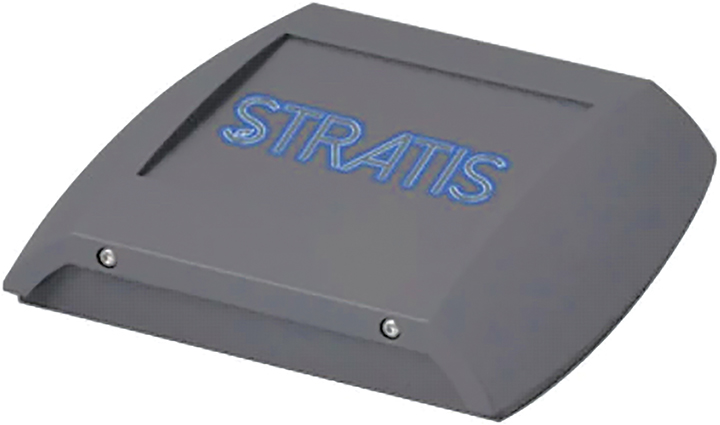Crafting the Best Bulk MDU Broadband Strategy
Providers crafting multifamily broadband strategies need to work with property owners/managers to understand the best fit. Whether a building is greenfield or brownfield can often dictate which type of network access technology is most appropriate. Service providers can use fiber or managed Wi-Fi, or leverage existing coax via MoCA and G.hn technologies.
 Lisa Moore
Lisa MooreReal estate development firm JPI, which is building multifamily communities in parts of California and Texas, sees bulk internet services as valuable on two levels. “Bulk internet shows the value of internet and technology so we can proactively create our network to prepare for what’s ahead of us,” said Lisa Moore, director of design innovation at JPI. “Also, creating value for our asset makes business sense.”
AT&T has aggressively expanded its multiple-dwelling-unit (MDU) fiber-to-the-home footprint and is keen on giving customers options. Whether it takes fiber into the unit or the property, AT&T offers an array of fiber-based products for MDUs. In cases of taking fiber to the unit, AT&T goes through the main distribution frame (MDF) and independent distribution frame (IDF) and out to the unit itself, enabling it to offer residents 1, 2 and 5 Gbps. It is also testing 10G in the labs.
 Sophie Schneckloth
Sophie SchnecklothSophie Schneckloth, national sales manager for AT&T Connected Communities, said the benefit of fiber is that it can satisfy current and future needs. “Having the ability to baseline a product for your entire property – whether it’s 100 Mbps, 300 Mbps or a gig – is great for your residents,” Schneckloth said. “Giving your residents the option to upgrade is a luxury in your community.”
 Vickie Rodgers
Vickie RodgersThough Cox Communications delivers fiber to MDUs, the cable MSO claims the sweet spot is 500 Mbps. “If you look at the research, most people feel strongly about 500 Mbps,” said Vickie Rodgers, vice president and general manager at Cox. “Even if you had 10 people in an apartment streaming all day long, they are not using the bandwidth.”
She adds that MDU owners/operators should “think carefully about the resident journey and ensure it fits long-term needs.”
Making the IoT Connection
Besides offering internet connectivity, any broadband option should consider emerging IoT property tech applications. Property owners increasingly rely on a broadband network to power building systems and monitoring systems, such as leak detection and access control that can be enabled by managed Wi-Fi or a fiber connection.
 Justin Foster
Justin FosterJustin Foster, director of community technology for Quarterra, said property owners could use IoT to streamline their view and management of all appliances, including boilers, generators and elevators. “There are many building systems that require internet,” Foster said. “Service providers have realized truck rolls are expensive, requiring internet service to operate the building.”
Foster said that as property owners look to streamline operations and maintenance with devices such as washers and dryers, a bulk-managed Wi-Fi service is essential. “When a washing machine or dishwasher breaks, hubs are connected,” he said. “We’re getting to the point where it’s becoming a requirement to manage Wi-Fi throughout an entire building.”
JPI continues to learn how to adapt property technology solutions to its properties, which are greenfield. “We’re working on new construction, so it’s a different strategy and easier because I can design from paper,” Moore said. “The best thing we can do is prepare for the future by installing infrastructure because it’s changing rapidly.”
Cox agreed but added that besides offering managed Wi-Fi, it can provide dedicated secondary networks for building staff and management teams. The cable MSO sees an opportunity to streamline operations for property owners and their staff by digitizing and automating the properties. “One of the top three things CEOs should be looking at is how to digitize properties and automate, so they drive costs down for their businesses,” Rogers said.
Looking forward, Cox is eyeing ways digital twins can help MDU owners who own multiple properties optimize buildings. A digital twin uses real-time data from the built environment to act as a virtual representation of a project. The technology can give owners and operators better insight into their building performance and help them quickly identify issues, optimize efficiency, improve safety and space utilization, and simulate the impact of potential new smart-building technologies.
“If you have a large portfolio of properties, you can see based on the patterns in your buildings how to optimize that for energy control and access,” Rogers said.
Creating Future Pathways
No one can accurately predict what the future holds for the MDU market, but panelists agreed that MDU owners/managers and their service provider partners need to be able to create adaptable infrastructure.
Because JPI develops greenfield properties, it builds conduits in multiple locations on each building property. In addition, it creates numerous points of entry to ensure network redundancy. “We are creating infrastructure because we have no idea what will be around tomorrow,” Moore said. “We’re doing our best to prepare to adapt to whatever the properties are going to be facing in three to five years.”
Likewise, AT&T, which makes building out fiber to greenfield MDUs a priority, does not have any primary barriers. “Fiber can grow with the needs of the property,” Schneckloth said.
Though there are no limitations to the amount of capacity fiber can deliver to buildings, she added that service providers should have multiple managed Wi-Fi equipment sources. “You need to ensure you have inventory available and test out multiple vendors to have options when deploying a property,” Schneckloth said.
Nevertheless, AT&T agrees that the infrastructure put in place can accommodate either fiber broadband or managed Wi-Fi. This means putting conduits in places such as garages and common areas and to have pathways for Wi-Fi access points.
“Planning for the future is building the infrastructure to give yourself options for the future,” Schneckloth said. “If you’re not doing managed Wi-Fi today and want to do it five years from now, you will have the conduit in place and even the wiring to the IDFs to the units, so you’re not retrofitting the unit itself.”
Pavlov Media: Bulk Managed Wi-Fi Provides Continuity of Service
Pavlov Media continues to have success in crafting and offering its multifamily property owner customers managed Wi-Fi services. Initially targeting student housing developments, Pavlov is finding other segments of the multifamily housing market that are adopting the service.
MDU developers can choose from a host of options: managed Wi-Fi, fiber to the unit, and fiber to the IDF with Ethernet to each unit.
 Bryan Rader
Bryan RaderBryan Rader, president of MDU for Pavlov Media, told attendees during the OPTECH Cool Communities program that a service provider must look at how a broadband solution meets the unique needs of building residents.
“You meet many people at events such as OPTECH who talk about technology and strategies around technology – but that’s the wrong way to look at it,” he said. “You must put your thoughts into the real estate strategy and how technology can fit that strategy to be successful.”
Wi-Fi Continuity
Though MDU developers have several options for providing broadband in their developments, a managed Wi-Fi bulk service offers several benefits for residents.
For one, managed Wi-Fi offers continuity of service. Pavlov has worked with MDU developers to create a Wi-Fi strategy for properties that can cover an entire property: apartment homes, greenways, fitness centers and other amenity spaces.
“When a resident rolls out of bed in the morning, grabs an iPad and starts streaming a movie, goes to work out on the elliptical machine and then sits in the hammock outside, he can stream without having to be reauthenticated,” Rader said. “That person is on the same network the entire time.”
Unlike traditional internet service, residents don’t need to call an 800 number and schedule an installation time. The service is also immediately available.
“Residents don’t need to set up an appointment or put a deposit down,” Rader said. “They are given a registration code when they move in so they can access the network before they move into their apartments.”
Don’t Set and Forget
As providers get ready to install a managed Wi-Fi network for a large MDU property, they should always be prepared to deal with any anomalies. Pavlov, for example, has people on site who can train residents about how the new service works.
Rader advised that property owners should have representatives from their service providers present when they start migrating residents to a new service. “When starting the onboarding process, have people on site,” he said. “It’s not a set-it-and-forget-it business.”
But the benefits of managed Wi-Fi aren’t available only to residents. The property staff can leverage the managed Wi-Fi network to oversee property operations. Propertywide managed Wi-Fi can come in handy for maintenance staff, which must respond to issues across a multisite development. Maintenance workers can report the completion of work orders immediately.
“When you have a property that has dozens of acres, a maintenance worker handling work orders can go into an apartment and fix the shot glass stuck in the sink’s garbage disposal,” Rader said. “[The worker] can close out the work orders in real-time.”
A Key Amenity
Broadband continues to become a critical amenity that renters can’t do without, and it’s a significant factor when choosing a place to live. According to RVA LLC Research, 85 percent of MDU consumers rated high-speed, reliable broadband as a top amenity, followed by in-unit washers and dryers at 78 percent.
“MDU developers include managed Wi-Fi as part of amenity packages and market it because it’s essential for their residents,” Rader said. “In all the customer preference surveys, internet connectivity is always at the top of the list.”
Though managed Wi-Fi is gaining momentum in the MDU market, Rader said it’s not a fit for every multifamily property. “When you have a multi-acre property where you want to cover every single nook and cranny with Wi-Fi access, it is an ideal solution,” he said.
Women Enter First Innings of Growing Property Technology Space
In the multifamily property technology segment, women have the potential to play a more significant role in driving innovation and growth.
During the Women in Multifamily Tech Meetup, part of a live broadcast of the NMHC Code 53 podcast series at OPTECH, two leaders in the multifamily property tech arena addressed ways women can rise into more prominent roles.
 Paige Pitcher
Paige PitcherCurrently, 36 percent of workers in the commercial real estate market are women. “Though that figure sounds pretty good, we know at the senior level it’s much, much lower,” said Paige Pitcher, head of strategic partnerships for Moderne Ventures. “In the venture capital space, it’s more like 13 percent.” She asserts that more women are needed in upper management in the industry.
Encouraging Diversity
The real estate industry is taking various steps to encourage diversity. Some real estate companies have gotten involved in Project Destined. Founded by Cedric Bobo, a former Carlyle Group executive, Project Destined partners with more than 100 real estate firms and 70 universities to provide diverse students with internship opportunities to explore ownership through live real estate deals.
 Stephanie Fuhrman
Stephanie FuhrmanStephanie Fuhrman, vice president of corporate development at Entrata, said that real estate companies could drive diversity on multiple levels. She noted that during her tenure at Catalyst Housing Group, the company was part of Project Destined to increase diversity and the adoption of young talent in the industry.
“I am doing many things to look at the diversity that takes into account not only gender and race but also diversity of thought, background and culture,” she said. “I think those are equally important to our diversity conversation.”
Similarly, Pitcher has seen what she said was a huge push for employee recruitment, retention and advancement. “We need to work top-down and bottom-up,” she said. “Moderne has one of the most diverse teams in terms of background. In the end, we have better results.”
Innovation Opportunity
As the commercial real estate industry looks to drive more diversity, there’s a significant opportunity to drive new property technology innovations, such as leak detectors, rent management and managed Wi-Fi.
However, though there are plenty of new technology innovations, adoption could have been faster. Pitcher pointed out that technology for commercial real estate is in the “early innings” phase. “Real estate is 17 percent of the GDP in the U.S., yet we only spend 2 percent on technology when every other industry spends 12 to 15 percent,” she said. “We have a long way to go.”
The property technology industry has continued to evolve over the past decade. During the industry’s early days, new companies such as OpenDoor and Blend directly provided consumer services.
Fuhrman said that customer demand for new services will drive more companies to rise to the challenge of developing new products and services. “The consumer is our customer, and the consumer is demanding these services,” she said. “They are getting great customer services from other industries and are forcing us to rise to the occasion.”
She added that the COVID-19 pandemic “enabled people to take chances, and as long as corporate cultures will still enable that, we’ll start to see more companies moving quicker in the innovation cycle.”
Industry Perspectives
“According to the 2022 NMHC/Grace Hill Renter Preferences survey, 89 percent of residents are willing to pay a premium for amenities, including high-speed internet.” – NMHC
“When water is wasted due to a leakage, it’s a huge issue for the climate.”
– Mitch Kanner, SmartRent
“Renters are more likely to pay their rent on time if they have a rent-reporting service made available to them.” – Nancy Crouch Morlini, RealPage
“Integration is a double-edged sword.” – Paige Pitcher, Moderne Ventures
“Managed Wi-Fi confuses many people.” – Bryan Rader, Pavlov Media
“We wanted to create a workspace and a living space that is a destination, not an obligation.” – Jim Stuart, Matter Real Estate Group
“The physical apartment market is starting to normalize after six consecutive quarters of tightening conditions, with a majority of survey respondents reporting higher vacancy and lower rent growth compared to the three months prior.” – Mark Obrinsky, NMHC
OPTECH Product Showcase
Respage Offers Social Calendar for Multifamily Industry
Respage launched its all-in-one social media management solution – the Respage Social Calendar. This new feature allows property managers and operators to plan, create, schedule and track social media campaigns for individual properties or entire portfolios via a calendar user interface.
Supported social platforms include Facebook, Twitter, Instagram, Google Business Profile and WordPress. The calendar view provides an easy-to-read visualization of scheduled social media posts and insight into properties that need additional attention and helps eliminate gaps in social planning. Teams can collaborate, comment, review posts and check analytics directly from the Respage social dashboard.

Yardi Expands Connected Software Suite
Yardi offered OPTECH 2022 attendees the opportunity to view several connected software platforms designed to attract prospects, convert leads, manage customer experiences and optimize performance:
- REACH by RentCafe, a digital marketing agency that helps multifamily brands build awareness, grow traffic and increase ROI.
- CRM IQ can manage prospects, applicants and residents.
- Chat IQ is a virtual assistant that enhances CRM IQ by automating responses via chat, text, email and voice.
- Home IQ modernizes apartments, adds convenience for renters and cuts operational costs.
- Yardi Elevate Suite is a collaborative solution that includes budgeting, forecasting, revenue management and asset oversight to improve performance and track KPIs across a portfolio.
MRI Showcases MRI Agora, AI-first solutions
MRI Software allowed attendees to view its open, connected technology platform, MRI Agora. The company said the platform will enable real estate businesses to make better decisions through connected data, automate mundane tasks and differentiate through technology.
As the real estate sector has accelerated the adoption of property technology solutions, it has enabled property owners to improve operational efficiency, automation and scalability. MRI Agora will offer new visibility by unifying data from multiple applications and sources across the property technology ecosystem, ultimately allowing users to perform tasks and access information through a single experience.
Nomadix Expands MDU Wi-Fi Portfolio
Nomadix introduced the latest version of its multitenant portal for service provisioning and management, complemented by its internet gateways and new LAN and WLAN infrastructure (with readily available stock) and its Alerts 2-in-1 solution for staff safety and Wi-Fi monitoring. The combination of these highly available, scalable products tailored explicitly for multitenancy needs allows the delivery of superlative services to large-scale, intelligent apartments.

Silicon Labs, STRATIS Bring Smart-Home Solutions to Apartment Communities
Silicon Labs and STRATIS collaborated on a new home solution targeting apartment complexes. The STRATIS 3.0 Gateway (STRATIS G3) hardware uses the Silicon Labs multiprotocol SoCs to provide multiprotocol wireless capabilities for its robust IoT platform, which connects intelligent devices throughout apartment communities. STRATIS G3 enables access, energy and automation management and control and offers a Sidewalk to Sofa solution for residents and property managers throughout multifamily and student housing. The gateway devices placed strategically throughout buildings provide a connected network of smart devices that enable energy efficiency, security, voice controls and remote-control capabilities previously available only to single-family homes.

Aerwave Secures $20M in Series A Funding
Aerwave secured $20 million in Series A funding, led by Moderne Ventures, with participation by World Cinema, Equity Residential EQR, RWT Horizons and Westover Companies. The investment will allow Aerwave to scale its operating platform.
Founded in 2019, Aerwave partners with property owners to provide multifamily rental communities with instantly accessible, gigabit-plus internet service and enables reliable connectivity of all smart-home devices throughout a property. Today, rental communities in more than 17 markets use Aerwave for Wi-Fi connectivity. Aerwave’s Series A funding will support its growth into more than 30 total markets within the next 12 months.
Sean Buckley is the editor-in-chief of Broadband Communities. You can contact him at sean@bbcmag.com.
 Sean Buckley
Sean Buckley









